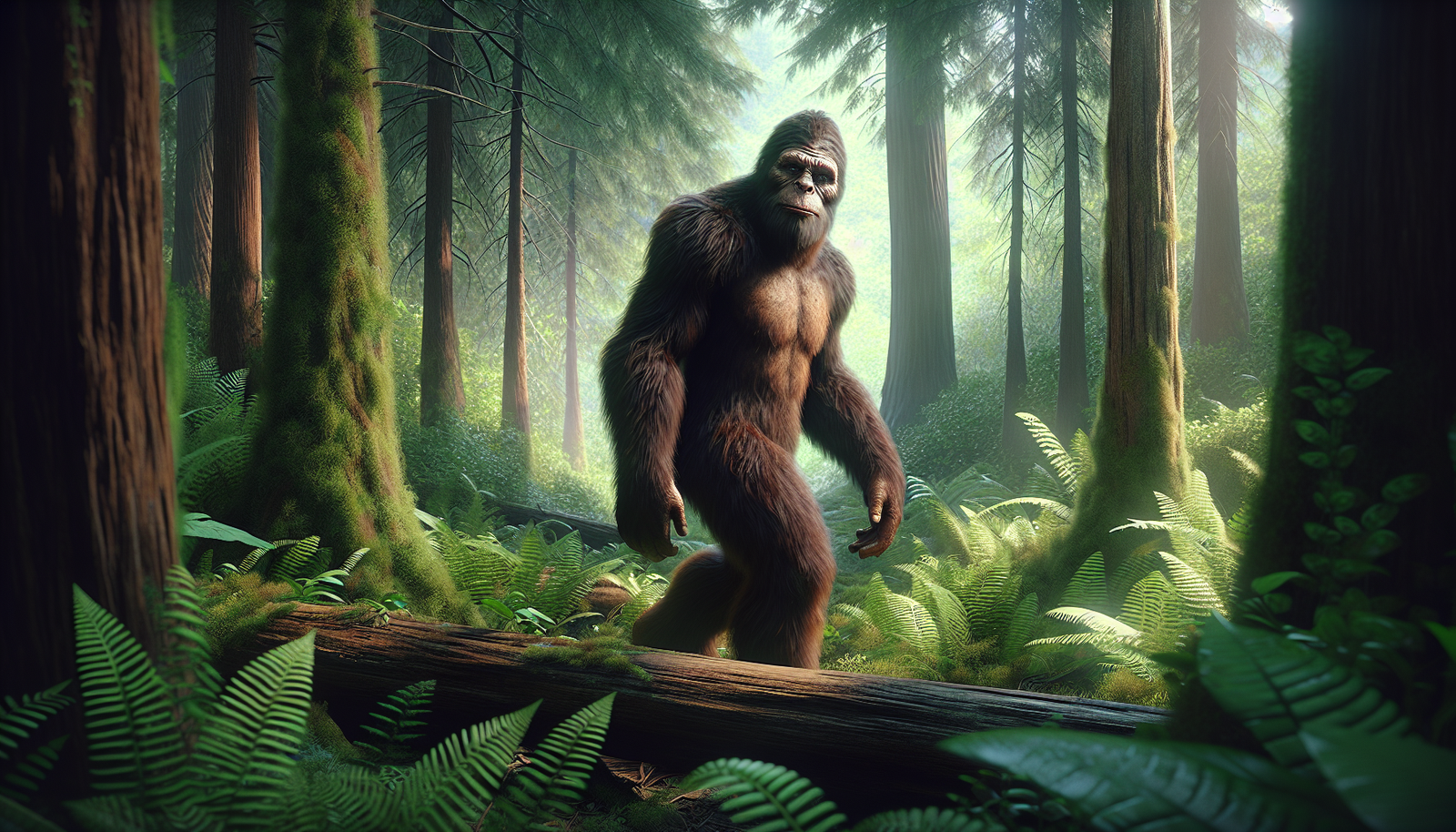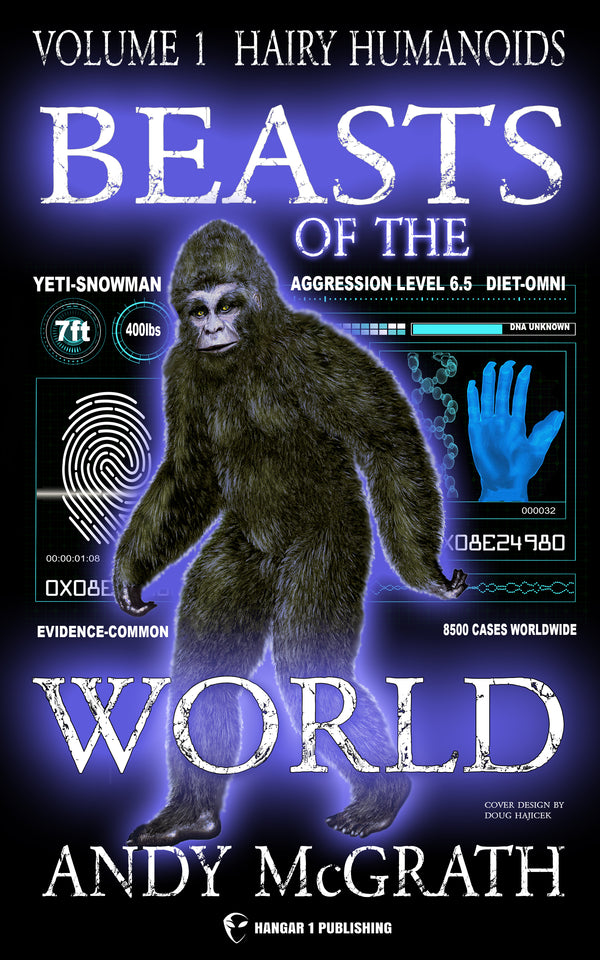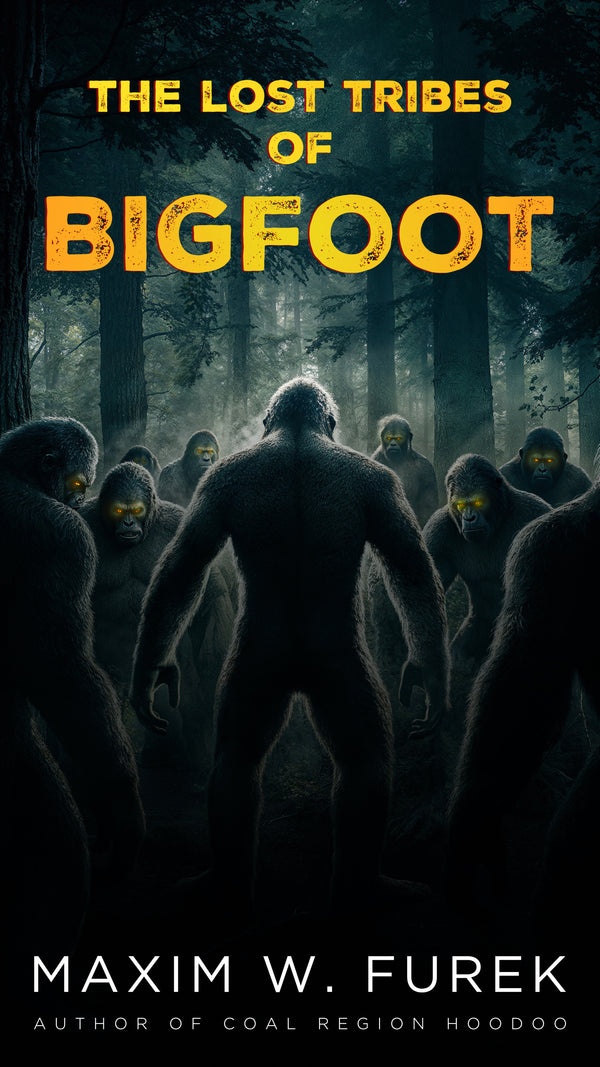Bigfoot and Human Encounters Analysis: Unraveling the Mystery

By James Roberts, Cryptozoologist
The Legend of Bigfoot: Ancient Roots and Modern Encounters
In the dense, misty forests of North America, a legend persists that captures the imagination and sparks debate among believers and skeptics alike. Bigfoot, also known as Sasquatch, has become more than just a mythical creature; it's a cultural phenomenon that reflects our complex relationship with the natural world and the unknown. This towering, hair-covered humanoid has been the subject of countless stories, scientific inquiries, and heated discussions for generations. But what lies at the heart of these encounters between humans and this elusive being?
The story of Bigfoot is as old as the forests themselves, with roots that run deep into the soil of Native American folklore. Long before European settlers set foot on the continent, indigenous peoples spoke of large, hairy "wild men" that roamed the wilderness. The Salish people gave us the term "Sasquatch," derived from "se'sxac," their word for "wild man." These weren't just campfire tales; they were integral parts of cultural education, teaching respect for the untamed areas beyond the village boundaries.
As settlers pushed westward in the 19th and early 20th centuries, these ancient stories began to collide with modern experiences. The Ape Canyon incident of 1924 marked a turning point in Bigfoot lore. A group of gold prospectors claimed they were attacked by "gorilla men" near Mount St. Helens, Washington. Their tale of terror, filled with vivid details of stone-throwing creatures and a night-long siege of their cabin, catapulted Bigfoot from folklore into the realm of potential reality for many.
The Cultural Significance of Bigfoot
But why does Bigfoot continue to captivate us in an age of satellite imagery and instant communication? The answer lies in what this creature represents. Bigfoot is more than just a potential undiscovered primate; it's a symbol of the wild, untamed spaces that still exist in our world. In an era where urban sprawl seems unstoppable and the natural world feels increasingly distant, Bigfoot embodies our longing for connection with nature and the thrill of the unknown.
This symbolic power has turned Bigfoot into a cultural icon, inspiring everything from serious scientific inquiry to campy B-movies. Organizations like the Bigfoot Field Researchers Organization (BFRO) have sprung up, dedicated to documenting sightings and searching for concrete evidence. These groups aren't just about finding a mythical beast; they're about fostering a community of individuals who share a passion for exploration and mystery.
The Psychology of Bigfoot Belief
The psychology behind Bigfoot belief is a fascinating study in human nature. Witnesses who claim to have encountered the creature often describe a profound emotional experience, ranging from paralyzing fear to awe-inspiring wonder. These encounters can be life-changing, forcing individuals to question their understanding of the world around them.
Take the case of Michael Freeman's father, a forest ranger whose alleged Bigfoot sighting transformed him from a skeptic into a lifelong believer. His experience highlights the internal struggle many witnesses face – the conflict between what they've seen and what they've been told is possible. This cognitive dissonance can be so powerful that it leads some to dedicate their lives to proving the existence of something most of the world dismisses as fantasy.
The Search for Evidence
But what about the evidence? Over the years, a vast array of "proof" has been presented: footprint casts, hair samples, audio recordings of strange vocalizations, and even video footage. The most famous piece of Bigfoot evidence remains the Patterson-Gimlin film from 1967, which purportedly shows a female Bigfoot striding across a clearing in Northern California. This short clip has been analyzed, debated, and scrutinized for decades, with some claiming it's irrefutable proof and others dismissing it as an elaborate hoax.
The quest for physical evidence has led to some intriguing developments. In 1976, the FBI analyzed hair samples submitted by Bigfoot researcher Peter Byrne. Their conclusion? The hairs were from a deer. This kind of scientific scrutiny is crucial in separating fact from fiction, but it hasn't dampened the enthusiasm of Bigfoot hunters.
One of the most compelling pieces of modern evidence comes from Stacy Brown, who captured thermal footage in Florida that appears to show a large, bipedal creature moving through the forest. The infrared nature of the video makes it difficult to dismiss as a simple costume, adding a layer of credibility to Brown's claim.
Skepticism and Alternative Explanations
However, the world of Bigfoot research is not without its skeptics and alternative explanations. A recent study by data scientist Floe Foxon found a strong correlation between black bear populations and Bigfoot sightings. This suggests that many encounters might be cases of misidentification, with people mistaking bears for the legendary creature, especially in low-light conditions or at a distance.
The possibility of misidentification raises important questions about the nature of perception and memory. In moments of surprise or fear, the human mind can play tricks, interpreting ambiguous stimuli in ways that align with our expectations or cultural narratives. This doesn't necessarily mean that all Bigfoot sightings are misidentified bears, but it does highlight the need for critical thinking and careful analysis of evidence.
The Impact of Technology and Social Media
The rise of social media has dramatically changed the landscape of Bigfoot research and reporting. Platforms like YouTube and Instagram have become hotbeds for sharing alleged Bigfoot encounters, with videos and photos spreading rapidly across the internet. This democratization of information has its pros and cons. On one hand, it allows for the rapid dissemination of potential evidence and connects witnesses with researchers. On the other, it can be a breeding ground for hoaxes and misinformation.
The impact of pop culture on the Bigfoot phenomenon cannot be overstated. From serious documentaries to campy horror films, Bigfoot has become a fixture in entertainment. This media saturation has both helped and hindered serious research. While it keeps public interest alive, it also blurs the line between fact and fiction, making it harder for researchers to be taken seriously.
Modern Research Techniques
Despite the challenges, many researchers remain committed to uncovering the truth about Bigfoot. Advancements in technology offer new avenues for investigation. DNA analysis techniques have improved dramatically since the FBI's 1976 hair sample test. Some researchers are now using environmental DNA (eDNA) sampling to search for traces of unknown primate DNA in areas of frequent Bigfoot sightings.
Wildlife tracking technology has also evolved, with high-definition trail cameras and thermal imaging devices becoming more accessible. These tools allow researchers to monitor large areas of wilderness continuously, increasing the chances of capturing compelling evidence if Bigfoot does indeed exist.
Conservation and Unexpected Benefits
The search for Bigfoot has unexpected benefits beyond the potential discovery of a new species. Many Bigfoot researchers have become passionate advocates for wilderness conservation. The argument is simple: if we want to find Bigfoot, we need to preserve the wild spaces where it might live. This has led to collaborations between Bigfoot enthusiasts and environmental groups, united in their desire to protect remote habitats.
Conclusion: The Enduring Mystery
As we peel back the layers of the Bigfoot phenomenon, we find a complex tapestry of human psychology, cultural narratives, and scientific inquiry. Whether or not Bigfoot exists as a flesh-and-blood creature, its impact on our collective imagination is undeniable. The enduring mystery of Bigfoot speaks to something fundamental in the human experience – our desire to believe that there's still something wild and unknown out there, just beyond the reach of our understanding.
The story of Bigfoot is, in many ways, a story about us. It's about our relationship with the natural world, our capacity for wonder, and our need to make sense of the inexplicable. As long as there are shadows in the forest and unexplained sounds in the night, there will be those who venture into the wilderness, hoping to catch a glimpse of something extraordinary.
In the end, the search for Bigfoot is more than just a hunt for a mysterious creature. It's a journey into the heart of what makes us human – our curiosity, our fears, and our endless capacity for belief in the face of uncertainty. Whether Bigfoot is out there or not, the quest to unravel this mystery continues to reveal profound truths about ourselves and our place in the natural world.
As we move forward, it's crucial to approach the subject of Bigfoot with both open-mindedness and critical thinking. The possibility of discovering a large, unknown primate species in North America may seem remote, but history is full of examples of creatures once thought mythical being proven real – the giant squid and the mountain gorilla among them.
At the same time, we must be willing to follow the evidence where it leads, even if that means challenging our preconceptions. The true spirit of scientific inquiry demands nothing less. As we continue to explore the wildest corners of our world, we should remain open to the possibility of wonder, while never abandoning our commitment to rigorous investigation and analysis.
The Bigfoot phenomenon reminds us that there's still mystery in the world, still questions to be answered and frontiers to be explored. It challenges us to look beyond the familiar, to question what we think we know, and to remain humble in the face of nature's vast complexity. Whether Bigfoot turns out to be flesh and blood or merely a powerful myth, its impact on our culture and our relationship with the natural world is undeniable and enduring.
As we stand at the edge of the forest, peering into the shadows, we're not just looking for Bigfoot. We're looking for a connection to something larger than ourselves, a reminder that the world is still full of mysteries waiting to be unraveled. And in that search, we might just discover something even more valuable than proof of an elusive creature – we might discover a new understanding of our place in the grand tapestry of life on Earth.
Despite the many tales of encounters, it's important to note that Bigfoot is generally not considered dangerous to humans. Most reported sightings describe a creature that seems more intent on avoiding human contact than engaging in any aggressive behavior. This perception of Bigfoot as a gentle giant further adds to its mystique and appeal in popular culture.
From Bigfoot to UFOs: Hangar 1 Publishing Has You Covered!
Explore Untold Stories: Venture into the world of UFOs, cryptids, Bigfoot, and beyond. Every story is a journey into the extraordinary.
Immersive Book Technology: Experience real videos, sights, and sounds within our books. Its not just reading; its an adventure.



























